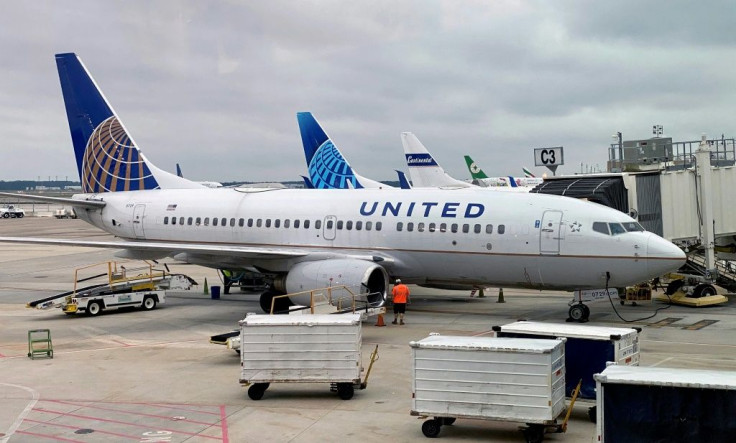United Airlines Invests In Electric Planes: Don't Count On Them Taking Flight Soon
United Airlines (NASDAQ:UAL) has announced a series of splashy aircraft deals in recent months. In early June, the global airline announced an agreement to buy at least 15 Boom Overture supersonic jets. A few weeks later, United placed the biggest commercial jet order since the COVID-19 pandemic began, agreeing to buy 270 additional planes from Boeing and Airbus.
Last week, United Airlines followed up those two previous deals by investing in electric aircraft start-up Heart Aerospace and conditionally agreeing to buy 100 of its ES-19 regional airplanes. However, investors (and air travelers) shouldn't expect these aircraft to be ready by their planned 2026 entry-into-service date. Moreover, they are unlikely to be commercially successful.
The return of the 19-seater?
Sweden-based Heart Aerospace was founded in 2018 with the goal of creating an electric aircraft. It initially focused its sales efforts on the Nordic countries, due to strong interest in decarbonizing air travel there.
Heart has begun developing the ES-19, a 19-seat regional aircraft that will be capable of flying up to 250 miles. A few decades ago, 19-seat planes were common in the U.S. regional airline industry. Today, they are all but extinct. Heart and its customers believe that electric planes will reinvigorate this slice of the market by dramatically reducing fuel and maintenance costs.
United Airlines and its regional partner Mesa Airlines (NASDAQ:MESA) seem to agree. United recently participated in a $35 million funding round for Heart and plans to buy 100 ES-19s "once the aircraft meet United's safety, business and operating requirements," with Mesa set to operate the planes.
Despite its short range, the ES-19 could potentially operate on over 100 current and future routes from United's hubs, according to the airline giant. Mesa Airlines -- which also invested in Heart -- added that the ES-19's reduced operating costs could allow it to resume flights to communities that have lost all of their commercial airline service over the past two decades.
Ambitious schedule
Heart hopes to have the ES-19 ready for commercial service by 2026. Yet that schedule seems unrealistic for a start-up developing a brand-new aircraft using new propulsion technology. For example, Mitsubishi Heavy Industries -- a company with decades of aerospace experience -- began developing a more traditional regional jet in 2008 and still hasn't achieved certification.
Moreover, electric aircraft present particular challenges for certification, mainly because of the flammability of lithium-ion batteries. Heart recognizes that this represents its biggest hurdle to getting the ES-19 certified, but that doesn't guarantee that the start-up can design an aircraft that meets stringent FAA safety standards within five years.
Heart Aerospace will also need to raise hundreds of millions of dollars of incremental funding to complete the development of the ES-19 and launch production -- assuming it doesn't go over budget.
Going electric doesn't address one big problem
While electric aircraft are likely to have dramatically lower fuel and maintenance costs than traditional commercial planes, that may not make them economically viable. A growing pilot shortage could make Heart's concept of a 19-seat electric aircraft a non-starter -- especially in the U.S.
A 2017 Cowen analysis found that mandatory retirements from the top five U.S. airlines would average more than 2,500 per year from 2021 to 2026. Meanwhile, these airlines and a variety of low-fare competitors will need to hire thousands of pilots each year to meet their growth plans. Regional carriers represent the No. 1 pilot recruiting pipeline for major airlines -- and the majors' hiring needs for the next five years exceed the total regional airline pilot workforce.
Regional airlines will have to dramatically increase their pay to replenish their pilot ranks. (Even at a budget carrier like Frontier Airlines, a second-year pilot makes over $100 per hour, versus $38 per hour at Mesa.) That will make 19-seat aircraft uneconomical, particularly because the ES-19 will fly at a cruise speed of 180 knots -- less than half the cruise speed of a regional jet -- thereby requiring more pilot time for any given flight.
Not ready for prime time
In the long run, decarbonizing air travel will be important for addressing climate change. Aircraft manufacturers (and airlines) have to start somewhere, and Heart's ES-19 represents a decent initial step.
That said, it's doubtful that Heart Aerospace can get the plane certified just five years from now. Moreover, without heavy government support, it will likely be impossible to fly the ES-19 profitably, except perhaps in a few unusual markets. Most Americans would prefer to drive an hour or two to a bigger airport rather than pay extra and endure a stopover just to fly out of their hometown airport.
Electric aircraft technology will eventually progress to the point of being commercially viable. But United Airlines' and Mesa Airlines' vision of flying dozens or even hundreds of 19-seat electric planes on regional routes by the end of the decade looks like a pipe dream.

This article originally appeared in the Motley Fool.
Adam Levine-Weinberg has no position in any of the stocks mentioned. The Motley Fool has no position in any of the stocks mentioned. The Motley Fool has a disclosure policy.
© Copyright IBTimes 2025. All rights reserved.





















